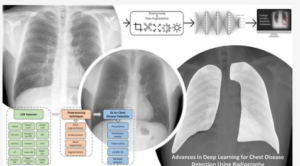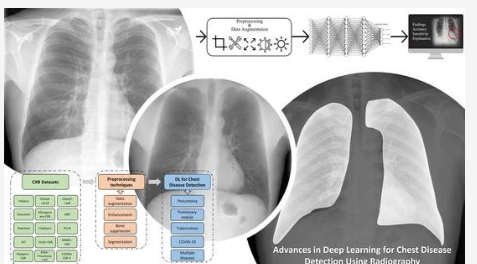Quantum X-ray: A New Paradigm for Material Testing and Analysis
Introduction to Quantum X-ray Technology
Quantum X-ray technology is transforming the way industries approach material testing and analysis. By leveraging quantum mechanics, this advanced imaging technique offers unprecedented precision, allowing scientists and engineers to inspect materials at the atomic level. Traditional X-ray methods, while effective, often struggle with resolution limitations and the ability to differentiate between similar substances. Quantum X-ray technology overcomes these challenges by utilizing quantum sensors and entangled photons to enhance imaging accuracy.
Industries such as aerospace, manufacturing, and materials science are beginning to adopt this technology for quality control, defect detection, and structural integrity assessments. With its ability to provide highly detailed insights into material composition and performance, Quantum X-ray is setting a new standard in material analysis.
How Quantum X-ray Works
The Science Behind Quantum X-ray Imaging
Quantum X-ray technology employs quantum sensors and entangled photons to improve imaging resolution and contrast. Traditional X-ray imaging relies on the absorption and scattering of X-rays as they pass through an object. Quantum-enhanced methods, however, take advantage of quantum entanglement to gather more detailed information about a material’s internal structure.
Quantum Entanglement and Enhanced Resolution
Quantum entanglement allows pairs of photons to remain interconnected, regardless of distance. In material testing, entangled photon pairs can provide a clearer and more accurate image by reducing background noise and improving signal clarity. This means that even microscopic cracks, impurities, or structural inconsistencies can be detected with greater precision.
Quantum-Enhanced Photon Detection
By employing highly sensitive quantum sensors, Quantum X-ray systems can detect individual photons with extreme accuracy. This leads to:
- Enhanced detection of structural flaws
- Improved differentiation between materials with similar compositions
- Higher resolution imaging for precise material analysis
Reduced Radiation Exposure
Unlike conventional X-ray techniques that require higher radiation doses to penetrate dense materials, Quantum X-ray systems optimize photon efficiency. This results in lower radiation exposure while maintaining superior image quality, making it safer for applications that require frequent testing.
Applications of Quantum X-ray in Material Testing
Aerospace and Automotive Industries
The aerospace and automotive industries require rigorous material testing to ensure safety and durability. Quantum X-ray technology enables:
- Detection of microcracks and defects in metal components
- Analysis of composite materials for stress points
- Evaluation of weld integrity and bonding in aircraft and automotive frames
Manufacturing and Quality Control
Manufacturers rely on material testing to maintain high-quality production standards. Quantum X-ray enhances quality control by:
- Identifying inconsistencies in raw materials
- Verifying product uniformity and structural integrity
- Detecting contaminants or defects before final assembly
Nanomaterials and Semiconductor Industry
The semiconductor industry depends on precise material analysis to produce microchips and electronic components. Quantum X-ray technology assists in:
- Mapping atomic structures within nanomaterials
- Identifying defects in semiconductor wafers
- Ensuring purity in electronic components
Energy Sector and Infrastructure Inspection
In the energy sector, Quantum X-ray technology aids in evaluating pipeline integrity, nuclear materials, and power plant components. This includes:
- Non-destructive testing of pipelines for corrosion and fractures
- Assessment of turbine blades and structural components in power plants
- Inspection of materials used in renewable energy technologies
The Future of Quantum X-ray in Material Science
Integration with Artificial Intelligence
As artificial intelligence (AI) continues to advance, its integration with Quantum X-ray imaging will further enhance material analysis. AI-powered algorithms can:
- Automatically detect and classify material defects
- Improve predictive maintenance by analyzing historical imaging data
- Optimize manufacturing processes by identifying inefficiencies in material composition
Portable and Cost-Effective Solutions
Quantum X-ray systems are expected to become more compact and cost-effective, making them accessible for on-site inspections in industries such as construction, mining, and forensic investigations. This will allow for:
- Rapid material testing without the need for laboratory facilities
- In-field analysis of structural components in bridges and buildings
- Enhanced quality control in remote or hazardous environments
Expanding Applications Beyond Industry
Beyond material testing, Quantum X-ray technology has the potential to revolutionize other fields, including:
- Archaeology and Paleontology: Non-invasive analysis of ancient artifacts and fossils
- Security and Defense: Advanced detection of concealed objects and explosives
- Medical Research: Improved imaging for biological materials and pharmaceutical development
Challenges and Considerations
High Initial Investment
Quantum X-ray technology requires significant investment in research, development, and implementation. While costs are expected to decline as adoption increases, industries must weigh the benefits against the initial financial commitment.
Need for Skilled Professionals
As Quantum X-ray technology introduces new imaging techniques, industry professionals will require specialized training to operate these systems effectively and interpret the complex data they provide.
Regulatory and Safety Approvals
The adoption of Quantum X-ray technology in various industries will require compliance with regulatory standards to ensure safety and accuracy. Establishing standardized guidelines will be essential for widespread implementation.
Conclusion: Transforming Material Testing and Analysis
Quantum X-ray technology represents a revolutionary shift in material testing and analysis, offering unparalleled precision, reduced radiation exposure, and enhanced defect detection capabilities. As industries continue to adopt this innovative technology, the potential for improved quality control, safety, and efficiency will reshape how materials are analyzed and utilized across various sectors. While challenges such as cost and training remain, ongoing research and technological advancements will drive the widespread adoption of Quantum X-ray, setting a new benchmark for material science and industrial applications.

Also Read :
